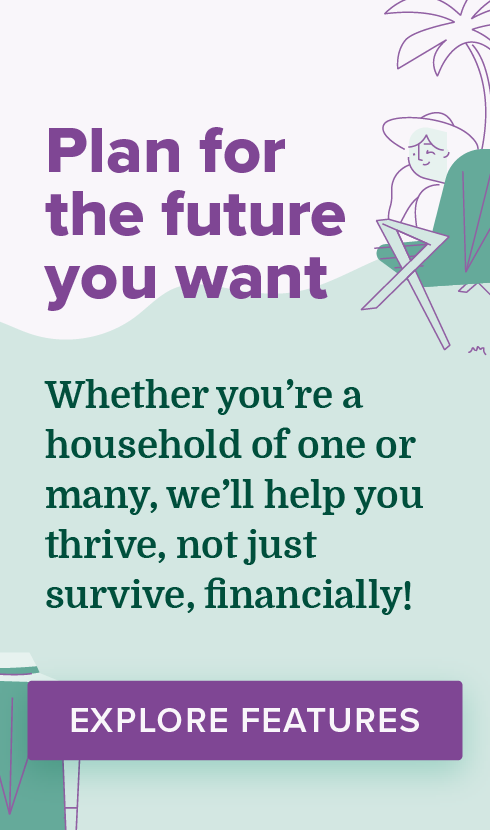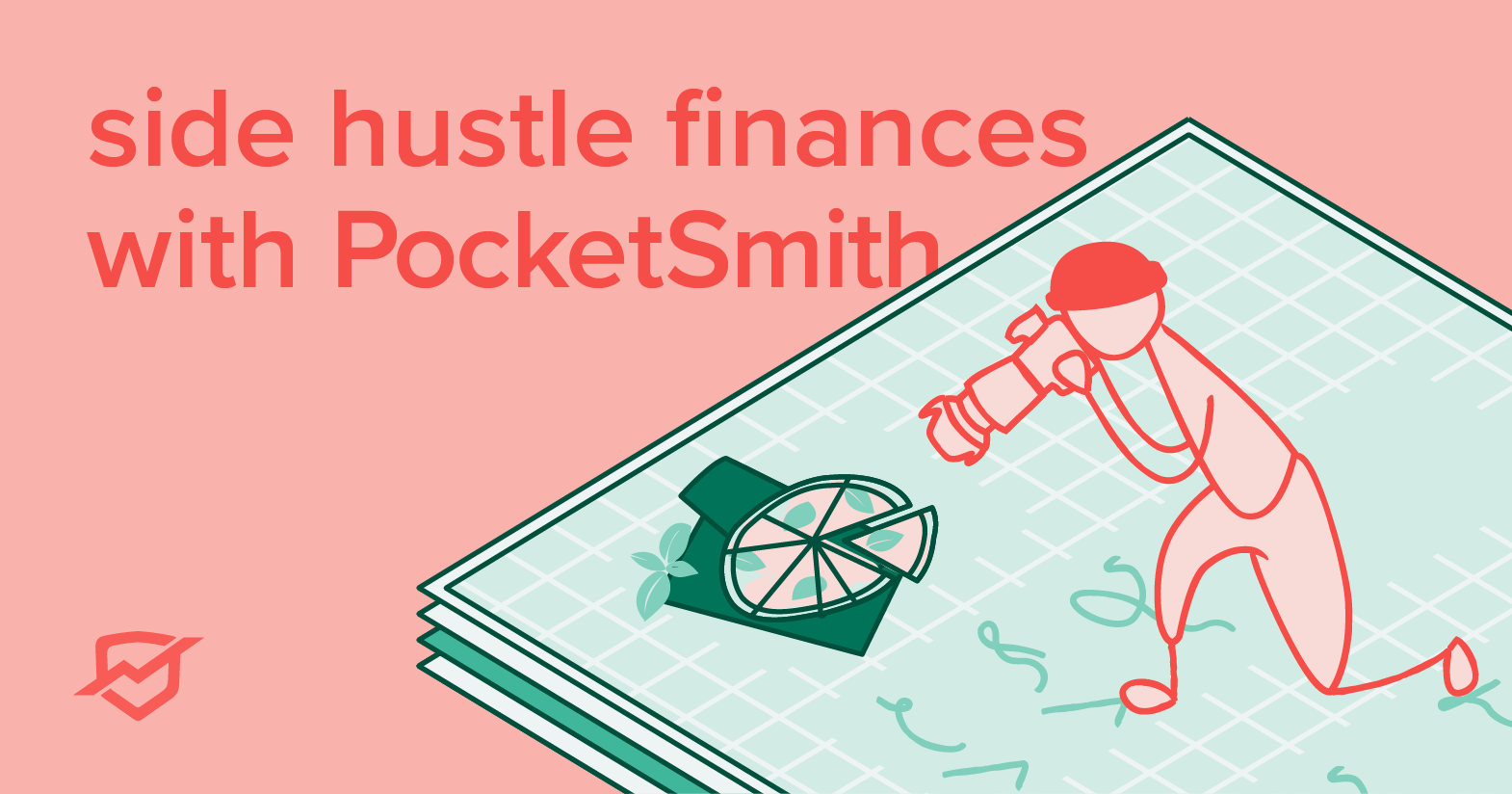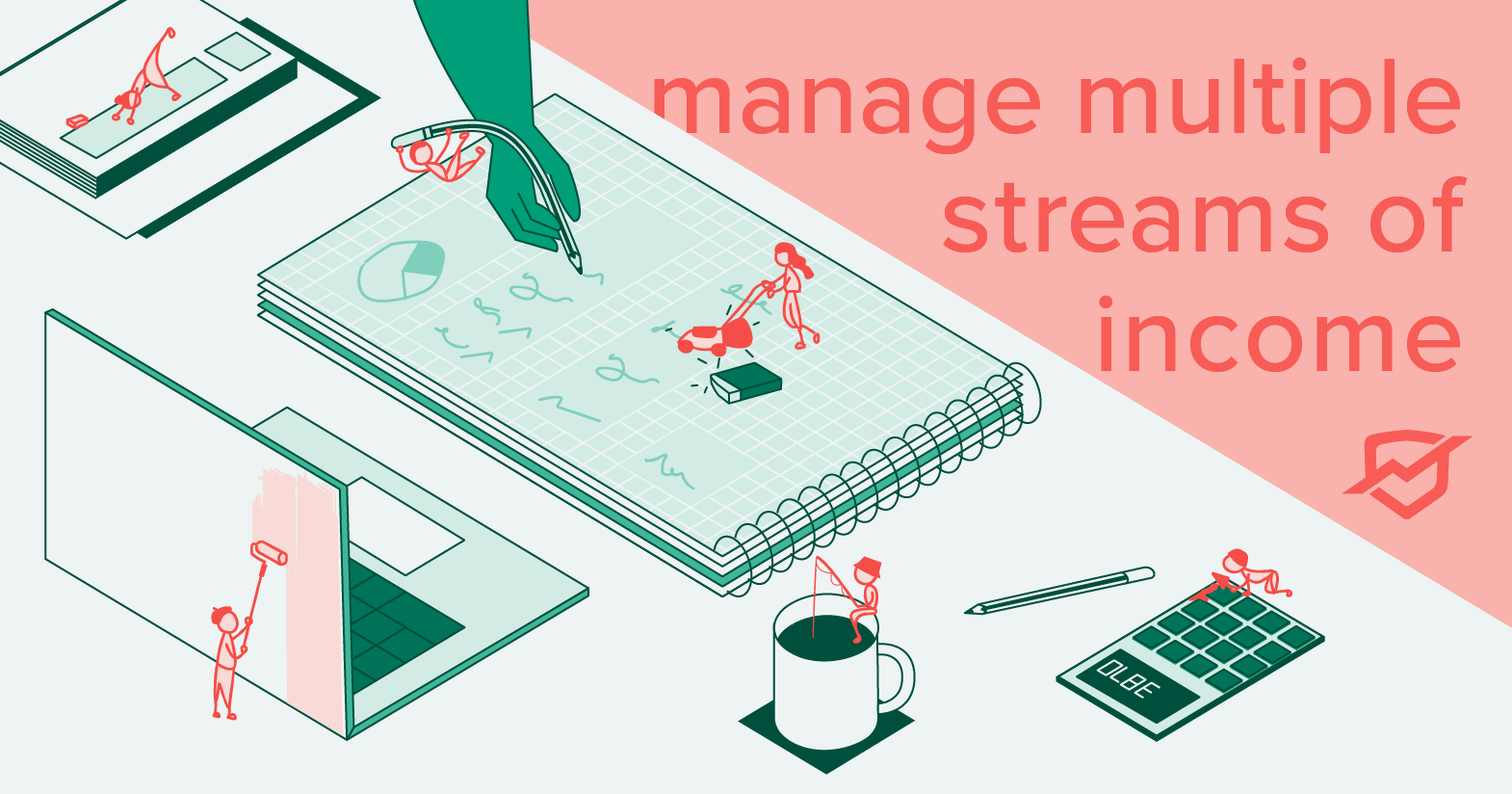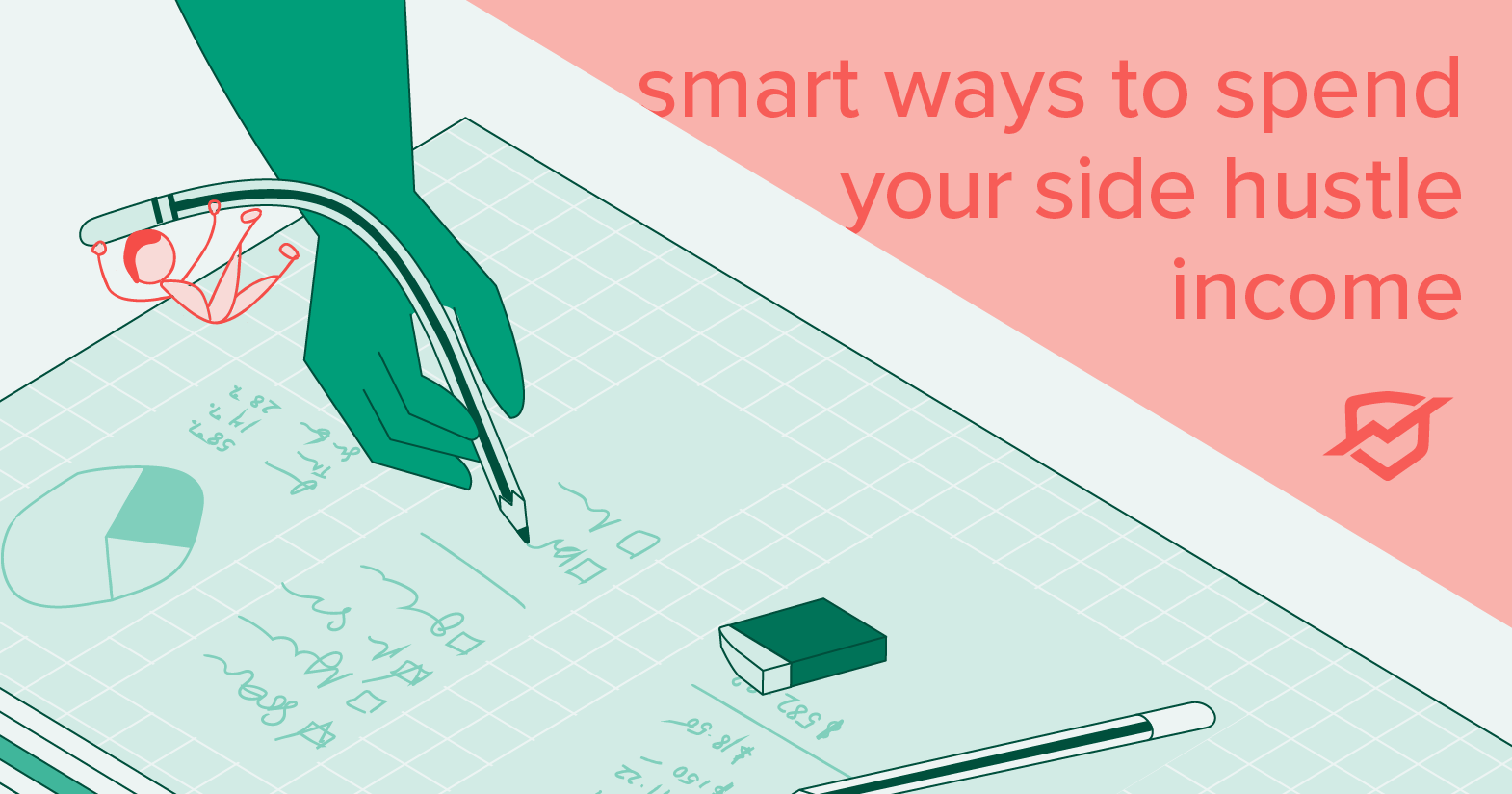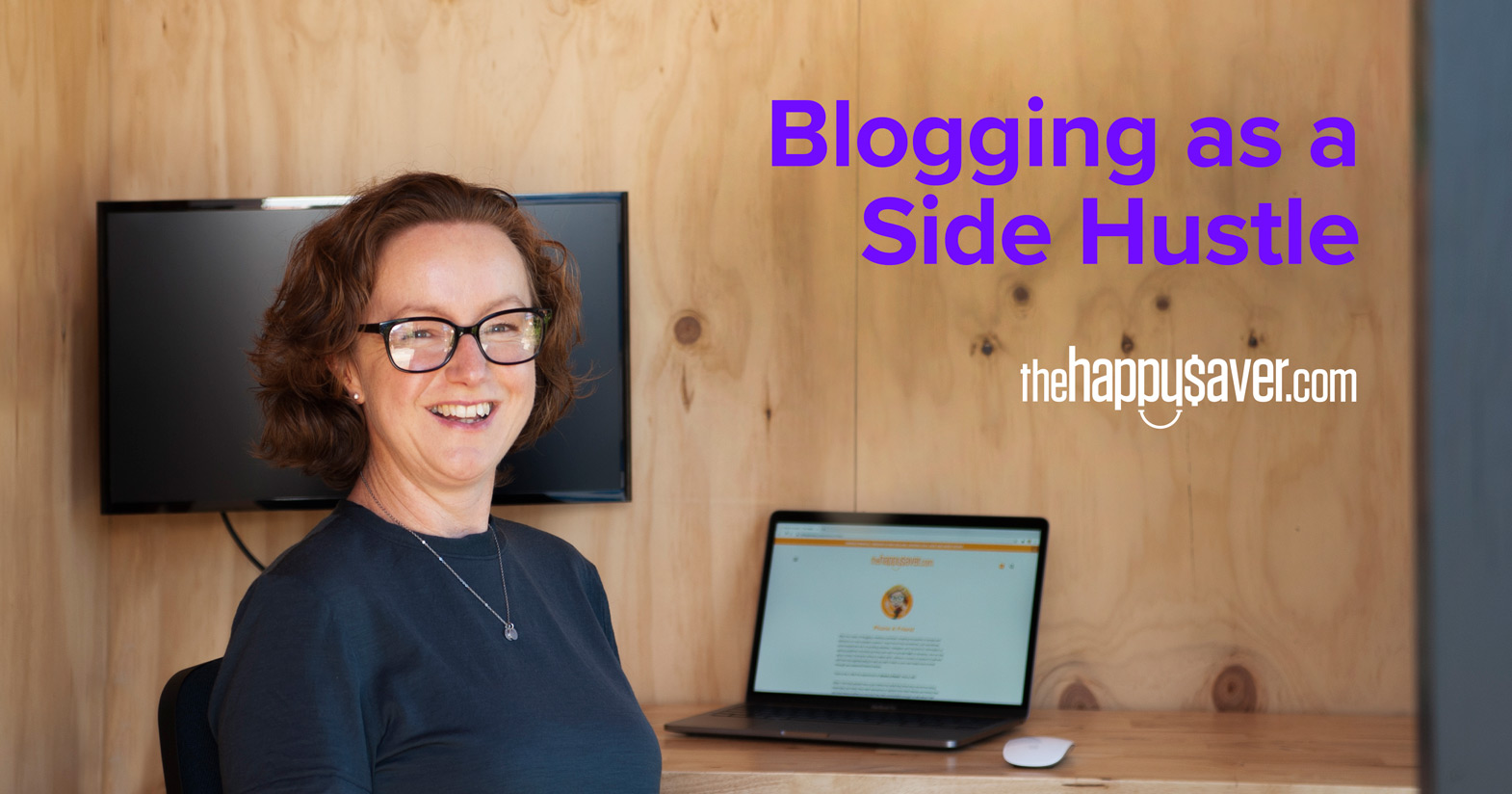
Blogging as a Side Hustle
Ruth has been blogging at The Happy Saver for five years, and her blog now out-earns her day job. Today, she shares her experiences about how to make money blogging. She encourages readers who are keen to create an additional income stream, to stop asking, “Should I start a blog?” and instead just start writing!
In June 2016, my blog, The Happy Saver, began, and my side hustle was born!
My husband Jonny and I decided to make things more difficult by picking a niche subject to blog about — personal finances specific to New Zealand. Unsurprisingly, we didn’t make our fortunes in our first year, or our second for that matter.
But things are now on the up!
Why start a blog?
Back then, I was new to investing and intensely interested in the topic, yet I struggled to find easy-to-understand information that could help me learn. I decided to compile the information about my own investment journey and the things I was learning in one place to make it easier for the next person.
I felt foolish asking such basic questions of banks and financial institutions. Still, I never should have, and I wanted my blog to become a place where people felt comfortable asking any question they liked, knowing that they would always get a straightforward, helpful answer.
It really became a question not of “why would you write a blog” but “why wouldn’t you write a blog”?
Using my interest in a topic, my ability to string a few words together, and Jonny’s tech ability, the side hustle, The Happy Saver blog, was born.
Our focus was and still is “how can I help other people”. We always knew that if I was consistently able to provide value and service to others over time, inevitably, the income would follow. It took time, but that is precisely what has happened. As a family, we now have multiple income streams that are independent of each other, bringing a level of security and comfort.
What does a side hustle mean to you?
A side hustle lets your desire to help others and your entrepreneurial spirit roam free. You can try out various ideas without fear of financial failure because you still keep your day job. Within a reasonable time, it needs to make money. Otherwise, it’s just a hobby. Ideally, you should be able to create your side hustle cheaply or for free using skills and resources that you already have, which give you a chance to pursue an interest or idea that excites you.
Getting started on the blog
Jonny and I are really fortunate because we have pretty different but complementary skill sets, and we each have distinct roles when blogging. As a graphic designer, he took a fast and steep learning curve about the backend of blogging, setting up a blog and maintaining the website. His approach remains that of learning on the move so he can adapt to the new technology that is forever being introduced.
While I’ve always been a very people-focused person with a deep (nosey) interest in what others are up to financially, I initially didn’t know how to turn that into something worth reading about. But I actually managed to tap into a skill I never knew I had — the ability to research and write. This is the beauty of a side hustle; you can take an interest that you have and push it to see where it will go and if you need to upskill in the process, then go for it!
I began to write blog posts, checking that first and foremost it was useful to other people and that it was factually and grammatically correct. When we first started to publish them, we did so to an audience of… zero people. Meaning the ability for growth had no limits!
How to build an audience for your blog
We decided early on that our website The Happy Saver would be the #1 place for people to find what I was writing about because we had 100% control over it. Plus, we quickly learned that blogging done well is very time-consuming, and to try to have a strong presence on the many types of social media platforms was going to be just too much work. We decided to concentrate on doing “our thing” exceptionally well instead of trying (and failing) to be all things to all people.
Create a mailing list
From day one, we asked people to subscribe to our email list, so we could let them know each time I released a new blog post or content that they would find helpful.
Create a routine
We set up a routine that has continued to this day, to send out an email to our subscribers every other Sunday. People came to anticipate and expect to hear from me.
Engage your audience
I also encouraged people to contact me if they had a question that they thought I might be able to help them with, and slowly over time, a flow of conversation began. Through this, I built up a personal relationship with my community. This, after all, was what I was looking for — the chance to chat to like-minded people and help them think through their money questions.
Spread the word
Each person I helped told their friends and slowly but surely they also joined my blog and our mailing list grew.
Be genuine
This is me. The way I write in my blog is a genuine reflection of my thoughts. If I was trying to be someone else, my blog would never have had the longevity that it’s enjoying. It is important to us that we build a “genuine audience”, one that really engages with the content I’m creating. There is no point in having 100,000 followers on Instagram if they never use the information I’m putting out there to improve their financial situation.
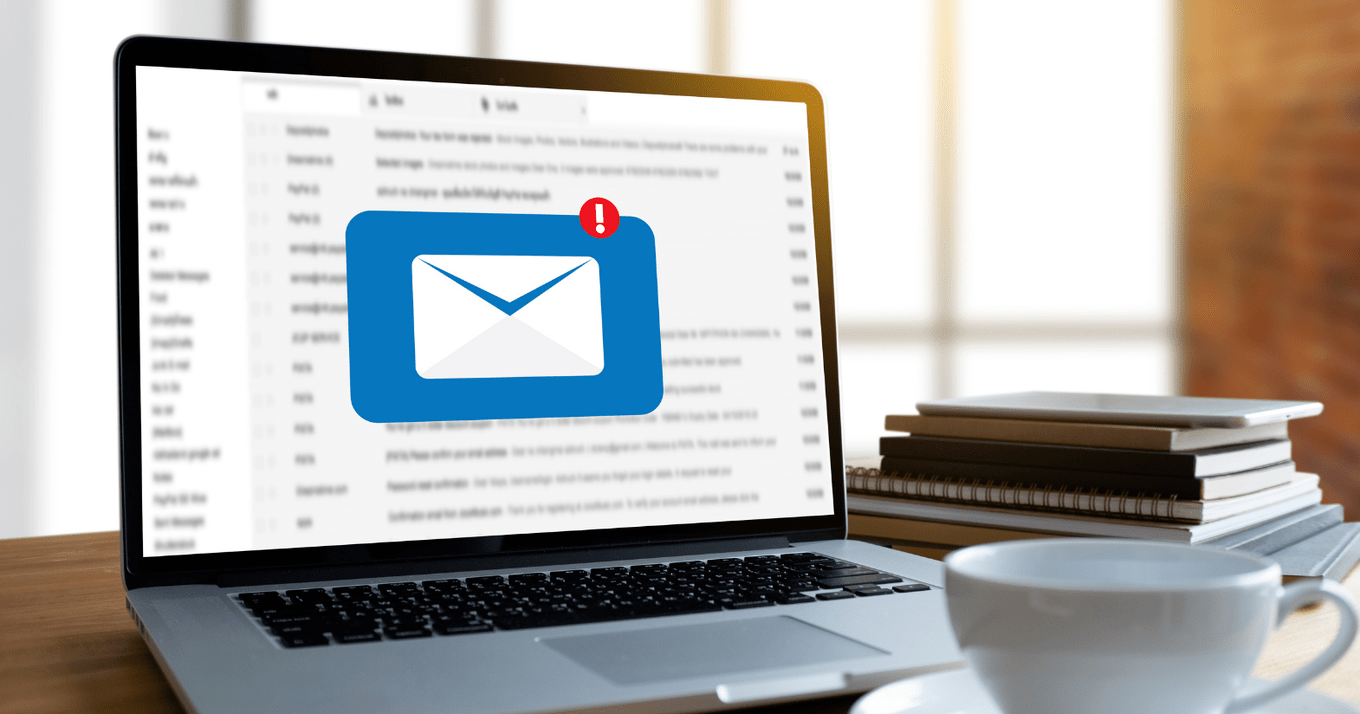
How you engage your audience is up to you — through a mailing list, on social media or just your blog itself.
How much does it cost to run a blog?
We used the computers that we already had, and in terms of the cost of setting up and running a blog, that’s relatively inexpensive to begin with, but the costs can start to grow:
- Purchasing a domain name: ~ $35 per year
- Custom email address: ~ $10 a month
- Website hosting: ~ $320 year
- Maintaining an email list: free up to 2,000 subscribers and then ~ $85 a month
- Imagery: ~ $120 a month to have the design software and access to stock photography and illustrations that we then customized to suit the branding on our site. However, you can get stock images for free, and many bloggers do this.
What is not included in this is our time. I would easily spend about four to five hours a day, seven days a week on my blog where I answer emails, chat to people and write content, and Jonny would spend about five to ten hours a week publishing my content and maintaining the website.
It sounds like a lot (and it is), but even after five years, I genuinely look forward to working on it each and every day. The genuine community I’ve created makes it worth it.
How I make an income from my blog
We create content with no expectation of return, and we always want our content to be free to our users. I still believe this is the best approach to take because it meant that I was coming at this from a genuine place. I honestly want to help people, not just make money and if I keep that top of mind, this blog will have longevity. I’ve seen many other personal finance blogs come and go, and I think they fail because they put money first, not second.
Affiliate links
We began to earn income when Jonny noticed that the products and services helping me on our own journey to financial independence offered affiliate programs. Meaning that if someone used a special link that I provided, we would receive a small commission. In early 2019, we started to offer these links to our users, and small commissions began to arrive every month, and over time, this income has grown.
Donations
My audience kept asking me how they could financially support me because the content I had consistently provided had added so much value to their lives, and they wanted to give back. So we added a donation tab to our site, and small amounts of money started to come in from this as well.
Coaching
I have answered thousands of emails for free, but people began to ask if they could speak to me instead. So, I started to offer a coaching service where people would pay for an hour of my time, and that income stream gently began to grow as well.
Podcast
When we decided to also create a podcast, revenue from our side hustle really started to increase. An enormous amount of time goes into producing each episode. I knew from the start that I wanted to be compensated for this, so I reached out to companies that I used in my own investment journey to see if they would support me by sponsoring the podcast. I was particularly honored when PocketSmith came on board and, in doing so, really represented what I’m trying to achieve with my blog — a genuine connection and relationship with the people and companies I engage with.
As we continue to monetize the blog, if I find a product or service that I believe in, I will add an affiliate link to my site. If it gets used, I get a small commission, and the user gets a deal as well, which I feel is a win-win. However, there are many companies that I talk about that I have no affiliation with at all, and they get free publicity. I continue to do this because I don’t want to be biased and just blog and talk about things that I get to clip the ticket on — that does not feel genuine to me.

I have the option for my readers to "buy me a coffee" on my blog — an easy way for them to say thanks if they want to!
Where I draw the line when it comes to monetizing
As my blog organically grew, I began to be approached by a myriad of companies wanting me to embed their material onto my site as a way for me to endorse their product or place paid advertisements on my website. Although I admit to being tempted, I have always turned down these offers.
I have a deep respect for the people who visit my site. I know their time is precious and that they could spend it elsewhere. Although paid ads are an easy way to monetize my blog, to me, they clutter up a website and upset the flow.
Another way bloggers create an income is to create a course that users pay to take or write a book. Both are incredibly time intensive and worth pursuing if you have the passion for that type of project.
The magical tipping point
Blogging as a side hustle has a tipping point. I’m getting close to it because my blog now out-earns my day job 2:1. Having multiple sources of income gives me flexibility and an interesting life.
While I love my part-time day job in a busy office with colleagues I genuinely like, I equally enjoy the world that is my blog. Both give me completely different things. If money was the only motivator in my life, then, seeing as my blog now out-earns my day job, I could technically give up my day job and focus on building my blog and podcast even more. But I worry that I could turn something I adore into ‘just a job,’ and I think I love it too much to let that happen!
Despite the work that goes into creating a blog, this side hustle is low pressure. It is not something that I have to do, it is something that I choose to do. If, at any point, my motivation changes, I can move on to something else. For now, it fits in with my lifestyle and with the time I can give to it.
Blogging for the long haul
If you would like to create a side hustle that is more work than your day job, then my advice is to start the most challenging, time-consuming and rewarding thing you can do. Start a blog about a topic that deeply interests you; one where you can provide a product or service that other like-minded people need and want.
For inspiration, check out the podcast Side Hustle School for daily motivation from fellow side hustlers from all over the world.
Be prepared to settle in for the long game because it takes time and commitment to create an audience of actively engaged readers who will hang around long enough to see that you are genuinely interested in their wellbeing.
Selling a product would be a heck of a lot faster! But, as I reflect on my five-year side hustle anniversary, this is shaping up to be one of the things that I am most proud of and excited about. And although I do make enough money from my blog to give up my day job, I still choose to do both. Because I think that is ultimately what a side hustle has given me, the ability to do multiple things that are independent of each other that I genuinely enjoy.
Ruth blogs at thehappysaver.com all about how she and her family handle money. What’s the secret? Spend less than you earn, invest the difference, avoid debt and budget each dollar that flows through your hands. She firmly believes that if you can just get the basics right, life becomes easier from there on in.

